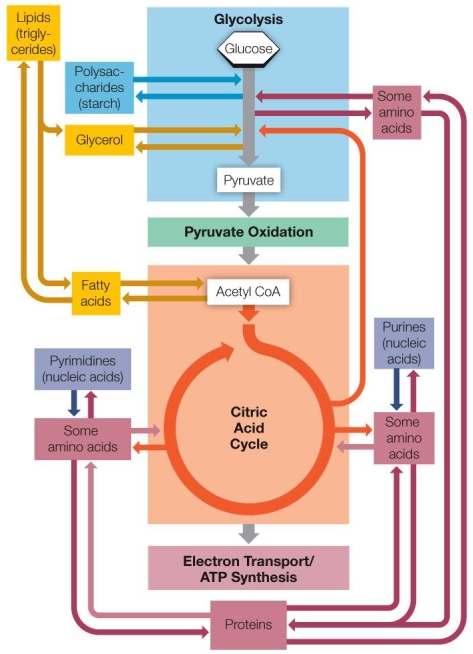Multiple Choice
Refer to the figure below.  Which sequence of metabolic paths could a carbon atom take to go from a molecule of glucose to a molecule of DNA?
Which sequence of metabolic paths could a carbon atom take to go from a molecule of glucose to a molecule of DNA?
A) Glycolysis glycerol biosynthesis triglyceride biosynthesis fatty acid biosynthesis citric acid cycle
B) Glycolysis amino acid biosynthesis citric acid cycle acetyl CoA synthesis nucleic acid biosynthesis
C) Glycolysis pyruvate oxidation citric acid cycle amino acid biosynthesis purine biosynthesis
D) Glycolysis amino acid biosynthesis protein biosynthesis citric acid cycle acetyl CoA synthesis
E) Glycolysis pyruvate oxidation citric acid cycle electron transport ATP synthesis
Correct Answer:

Verified
Correct Answer:
Verified
Q104: Refer to the table summarizing information collected
Q105: When NADH is the electron donor to
Q106: A microbiologist is characterizing a newly discovered
Q107: During the energy-investing portion of glycolysis, the
Q108: A species of bacteria was cultured in
Q110: Energy production occurs in different locations in
Q111: _ is the reduced form of one
Q112: Refer to the figure, showing allosteric regulation
Q113: Workers in wine production facilities have an
Q114: Which compounds link glycolysis and the citric